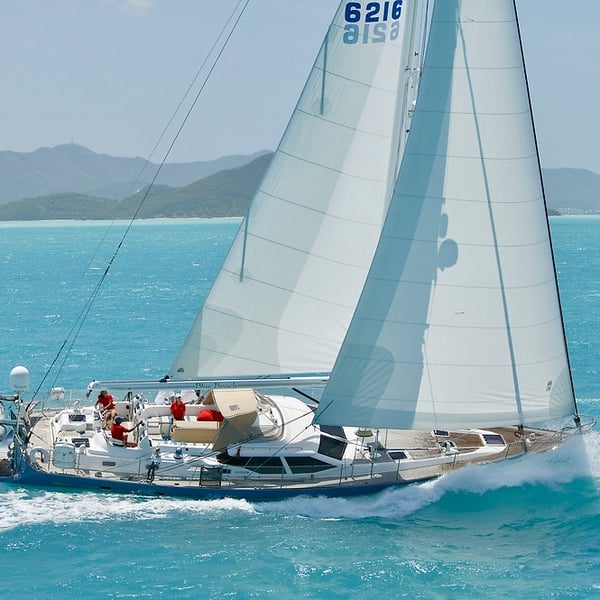
BY ANDY RICE, INTERVIEWING BJARNE LORENZEN
Most of the time we think of furling headsails but as Bjarne Lorenzen of sailmaker Doyle O’leu explains, there are options for furling your mainsail too. In the fifth and final post from this series, Bjarne considers the pros and cons of ‘in boom’ or ‘in mast’.
The choice of furling mainsails into the boom or into the mast partly comes down to local preference, says Bjarne Lorenzen. “In Germany we have more in-mast furling than in-boom. In Australia and New Zealand, however, we see more in-boom mainsails being used. It also partly depends on the make of the yachts. For example Bavaria, Hanse and Beneteau all offer in-mast furling mainsails as an option, most don’t offer in-boom.”
The in-boom option requires less compromise of your ideal sail shape, but it does require the angle of the boom to be precisely located before you start furling away the mainsail. Otherwise the furl will not go smoothly. Despite the challenges, as a sailmaker, Lorenzen tends to be more of a fan of in-boom compared with in-mast. “The sails for the in-mast option are very different. You can do a charter boat with negative roach which is quite ugly - but it’s still sailing. You need vertical battens, it doesn’t matter whether they are long or short battens, but they tend to be longer than normal horizontal battens. I can’t say it’s an elegant solution, but it works.”
 In-mast mainsails are very easy to stow away under most circumstances, which is what makes them so attractive for charter use.
In-mast mainsails are very easy to stow away under most circumstances, which is what makes them so attractive for charter use.
However, they’re much harder to raise and lower in the first place, which tends to make this a once-a-season exercise. Lorenzen weighs up the pros and cons. “The shape is not as bad as people might believe. With vertical battens we can create a good roach, so the flying shape is not as disadvantaged as you might think. However, the mast is very stiff and you can’t bend it much, so you don’t have that last bit of control over sail shape like you might on other boats. The problems come, though, if you want to reef the sail or if it is damaged, because there is no way of lowering the sail easily with an in-mast system.
The luff of the lowered sail is not attached to the mast, so the sail can easily get blown away during the take-down. The lowering of a reefed sail, which is already furled a few rounds, is impossible without the risk of damage.”
The other factor to consider is that an in-mast option is a completely integrated rig package. You can’t easily retrofit to an in-mast option for your boat without completely changing the mast too. There are some systems to attach furling systems to the backside of the mast, but these are relatively heavy and stop the mast from bending. The manufacturers are keen to keep the additional furling aluminium sections as small as possible which can make it tricky to get the full mainsailed rolled away in the available space.
In-boom furling avoids many of the compromises of in-mast, says Lorenzen. “Most of the in-boom mainsails are fully-battened, because you need the battens to keep the tension in the foot when you reef the sail into the boom. Also, you can achieve more roach in the sail with horizontal battens, so you don’t really need to compromise your ideal flying shape so much.” Raising and lowering the sail is straightforward compared with the much greater challenge of in-mast.
The in-boom option doesn’t tend to come cheap, however. “In-boom customers are not your average customer; it’s more for those aiming for a higher quality - for performance cruising boats, like Luffe yachts, a Swedish performance cruiser with carbon rig for example. In-boom is not going to appeal to the average cruiser with his Bavaria 34. This is for the keen cruising sailor who likes to spend more money on the boat, who appreciates really nice sails. In-boom enables you to trim the mainsail better and bend the mast if you are looking for that little bit of extra performance.”
If you would like more information on mainsail furling on your boat please use the link below, or contact us at support@upffront.com



